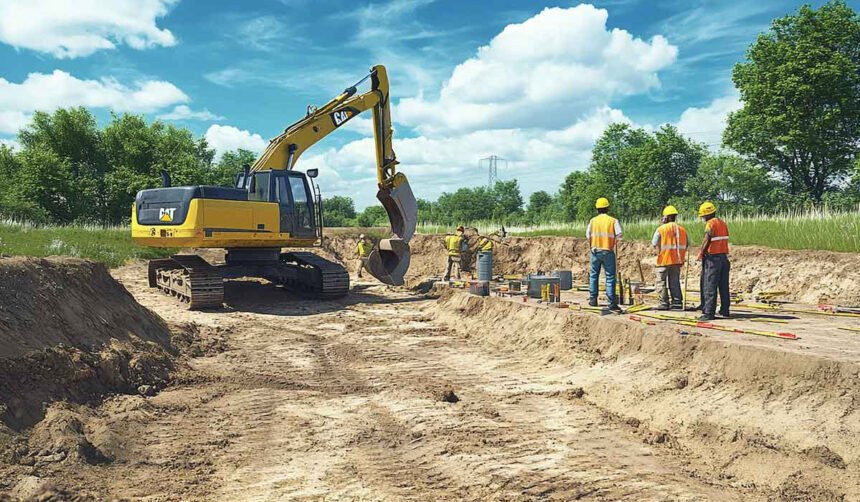Before any structure is built, before roads are paved or utilities installed, a vital step must be taken to prepare the ground for what’s to come. It’s not a phase that gets much attention in flashy real estate listings or glossy architectural brochures, but it is the foundation—literally and figuratively—of every construction and development project. This critical step is land clearing.
Land that appears untouched and natural might seem serene and picturesque, but it often holds hidden complications for builders, developers, and property owners. From invasive vegetation to buried debris, unmanaged land can hinder everything from basic access to major construction. Land clearing is the process that transforms such spaces from wild and unworkable to clean, build-ready environments.
Whether it’s for a residential build, a commercial project, or agricultural development, preparing the land properly is not optional—it’s essential.
Understanding the Land Before Development
To most observers, undeveloped land might look like an open field, a dense forest, or even a rocky lot. But beneath the surface—and within the overgrowth—there can be numerous elements that must be assessed and addressed.
This includes:
- Tree coverage and vegetation that must be managed or removed
- Soil composition and drainage patterns
- Topography and elevation changes
- Hidden structures, debris, or waste
- Protected ecosystems or sensitive environmental areas
Before any excavation or foundation work can begin, the space needs to be cleared of obstacles, leveled if necessary, and prepped to allow for proper utility installation, roadways, and drainage systems.
This is where land clearing steps in—not just as a brute-force operation, but as a strategic and environmentally conscious process.
The Phases of Land Clearing
Clearing a piece of land is a multi-step operation that involves far more than cutting down trees. Each step is guided by planning, safety, efficiency, and long-term vision.
1. Site Assessment and Planning
Before any machinery hits the ground, professionals assess the site. This may involve surveying, soil testing, environmental impact studies, and subsurface utility engineering to accurately locate and map underground utilities. Knowing what lies beneath or within the area ensures that clearing efforts are safe and strategic.
2. Brush and Vegetation Removal
This includes cutting and removing small trees, shrubs, weeds, and ground-level plant matter. Depending on the type of vegetation, this step may involve mulching or grinding, especially if vegetation can be reused on-site for erosion control or ground cover.
3. Tree and Stump Removal
Trees often require specialized cutting, and stumps may need to be pulled out or ground down. For larger developments, this is done with heavy machinery like excavators, mulchers, and stump grinders. Trees of significant value may be repurposed as timber or wood chips.
4. Rock and Debris Clearing
Many sites have buried debris, trash, concrete, or natural rock formations that must be removed or repositioned. This ensures that foundations, pipes, and pathways won’t be compromised by hidden obstacles.
5. Grading and Soil Preparation
Once the surface is cleared, the ground may need to be leveled, sloped, or compacted depending on the project requirements. Grading also plays a vital role in drainage management to prevent flooding or erosion later.
6. Erosion and Environmental Controls
Proper land clearing includes safeguards to protect nearby ecosystems. This may involve silt fences, drainage basins, or controlled runoff systems to ensure surrounding areas aren’t damaged.
The Equipment Behind the Work
Modern land clearing operations use advanced machinery to complete work efficiently and safely. Some of the common tools include:
- Bulldozers and loaders for large-scale vegetation and debris removal
- Excavators for stump and root extraction
- Mulchers and chippers for on-site recycling of organic materials
- Grading equipment for leveling and soil preparation
- Chainsaws and brush cutters for precision cutting in tighter areas
Professionals choose the right tools based on land size, density of vegetation, terrain, and project goals.
Common Reasons for Land Clearing
While construction is a leading reason for land clearing, it’s not the only one. Many property owners and developers use these services for a range of needs, including:
✅ Residential Development
To build homes, pools, driveways, or outbuildings, land must be free of obstacles and properly graded.
✅ Commercial Construction
Large sites may need extensive clearing to accommodate parking lots, facilities, and infrastructure.
✅ Agricultural Use
Farmers clear land to plant crops, create pastures, or manage irrigation systems.
✅ Fire Prevention
In fire-prone regions, clearing dry brush and thinning trees can reduce fire risk.
✅ Landscape and Aesthetic Improvement
Even if no construction is planned, clearing land can improve usability, access, and visual appeal.
Environmental Considerations
Land clearing, when done without proper oversight, can negatively impact ecosystems, water sources, and wildlife. However, when executed by knowledgeable professionals with the right permits and planning, it can support sustainable development.
Key environmental strategies include:
- Selective clearing to retain important trees and natural features
- Reusing organic material for erosion control or compost
- Creating buffer zones near wetlands, rivers, or protected habitats
- Minimizing machinery paths to limit soil compaction and damage
Professionals in this field understand the importance of balancing development with conservation. Many use GIS mapping and drone technology to identify sensitive zones before work begins.
Risks of DIY Land Clearing
With small equipment rentals available, some landowners are tempted to handle clearing themselves. But there are significant risks involved:
- Safety hazards including injury from machinery or falling debris
- Improper disposal of vegetation or hazardous materials
- Legal penalties for unpermitted clearing, especially in protected zones
- Damage to soil or underground utilities from inexperienced digging
- Inadequate grading that leads to flooding or instability later
Hiring professionals reduces these risks and ensures the job is done to code, on time, and within budget.
Choosing the Right Land Clearing Contractor
Not all land clearing providers offer the same level of service. Here’s what to look for:
✔ Experience
Ask about past projects, especially those similar in size or scope to yours.
✔ Equipment
Ensure they own or have access to the machinery needed for your job.
✔ Permitting Knowledge
They should understand local regulations and assist with necessary permits.
✔ Insurance
Proper coverage protects you from liability in case of accidents or damage.
✔ Environmental Practices
Choose a contractor who respects sustainable practices and minimizes ecological disruption.
Clear communication, transparency in pricing, and a willingness to collaborate are also signs of a trustworthy team.
The Long-Term Benefits of Proper Land Clearing
Investing in high-quality land clearing offers long-term rewards that extend far beyond the initial project phase.
- Increased property value from enhanced usability and access
- Reduced future maintenance costs by preventing weed overgrowth or drainage issues
- Faster project timelines due to well-prepared terrain
- Better structural integrity for buildings placed on solid, compacted ground
- Improved safety by removing unstable trees or hazardous debris
It’s an essential step that pays off in durability, functionality, and peace of mind.
Final Thoughts
Before the cement mixers roll in and construction crews arrive, the land must be made ready to support what comes next. Done right, land clearing is a process that combines technical precision, environmental care, and long-term vision.
From small backyard projects to multi-acre developments, cleared land represents potential—unlocked and ready. It’s a foundational service that ensures success from the ground up, literally paving the way for what’s to come.
Whether you’re breaking ground on a new home, expanding agricultural fields, or starting a commercial build, professional land preparation will set the tone for everything that follows. In this unseen, early phase of development lies the key to stability, efficiency, and success.
For More Information, Visit Dotmagazine








